DURING GOOD TIMES AND BAD, THE PDAC ADVOCATES, INFORMS, AND OFFERS MINING PROFESSIONALS A CHANCE TO NETWORK WITH FINANCIERS AND SERVICE PROVIDERS.
By Steve Fiscor, Editor-in-Chief
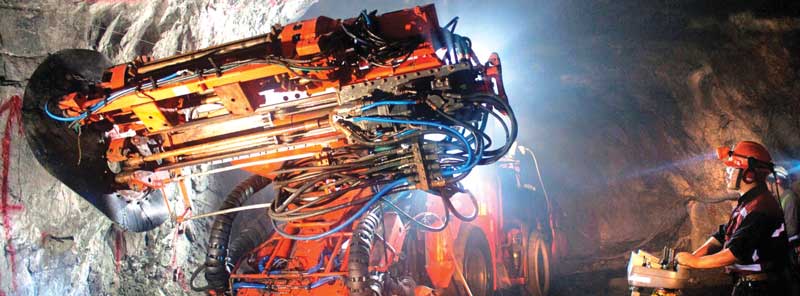 |
| PDAC recognized Capstone Mining, which operates three copper mines including the Cozamin mine (above), for its leadership in development. |
It had to happen sooner or later. For the past several years, the attendance at the Prospectors & Developers Association of Canada’s (PDAC) annual convention continually swelled, until this year. The growth was driven by a rally in the metal mining market and the association’s ability to produce a topnotch event. While attendance this year fell short of last year’s 30,000 figure, it still exceeded 25,000, confirming that the PDAC convention remains the world’s premier event for the mineral industry.
These are tough times for prospectors and developers. The latest World Exploration Trends report from SNL Metals & Mining stated that all company types cut their exploration activity sharply in 2013 in response to lower metals prices, uncertain demand, and poor market conditions. The result was a 29% decrease in estimated worldwide nonferrous metals exploration budgets compared with 2012. According to the report, the mining industry’s total budget for nonferrous metals exploration was $15.2 billion in 2013, significantly lower than the record $21.5 billion total in 2012.
While a large component of PDAC 2014, which took place March 2-5 in Toronto, is dedicated to exploration activities worldwide, the association has wisely diversified into other areas. The technical program is a prime example. Dozens of professionals presented information on exploration, geometallurgy and mineral economics. The program also included Corporate Social Responsibility (CSR), an Aboriginal Program and the Investors Exchange, which also garner support from the general public.
In addition, PDAC hosted 20 international mines ministers, a new record number. “We have seen tremendous growth and interest from senior levels of government from around the world,” said Ross Gallinger, PDAC executive director. “This is a testament to the opportunity that the PDAC convention provides for learning, networking and exposure.” Peru Vice President Marisol Espinoza toured the convention and attended a series of bilateral meetings. She also performed a traditional Peruvian dance at an evening soiree. Peru became the first ever country to sponsor, an opportunity to highlight the country’s interests in mineral exploration and development.
One of the highlights for PDAC 2014 was a visit from the Canadian Prime Minister the Right Honorable Stephen Harper. The prime minister and 49 federal parliamentarians attended to lend their support for the mineral industry.
“The PDAC convention has emerged as a critical venue for public policy discussions that our sector needs to have in order to be successful,” said Gallinger.
The association, as they do every year, honored six industry leaders. The annual awards showcased the achievements of companies, individuals, and groups in the mineral exploration and mining sector by highlighting the best in domestic and international mineral discovery, mine development, Aboriginal achievement, environmental and social responsibility, and distinguished service. The winners of the 2014 annual awards were presented at an evening event at the Fairmont Royal York Hotel.
Viola R. MacMillan Award
Capstone Mining Corp. received the Viola R. MacMillan Award for company or mine development. Capstone has demonstrated leadership and management in the successful development of the Minto and Cozamin copper mines and in its acquisition of Pinto Valley copper mine, as well as transforming itself into an intermediate copper producer. Located in the Globe-Miami mining district in Arizona, the Pinto Valley site is expected to produce 130 to 150 million lb of copper in concentrate annually, projecting the annual copper production to increase by more than 160%, from 85 million lb copper to 235 million lb copper.
Based in Vancouver, Darren Pylot, president and CEO, Capstone Mining, and his team have helped foster the company’s growth from a junior exploration company to a solid mid-tier copper producer. “We started in Mexico as a junior explorer focused on gold and we acquired a portfolio of gold and silver assets. One of those assets was a past producing copper–silver-zinc-lead mine, which is now our Cozamin mine,” Pylot said. Capstone then merged with Sherwood Copper giving it its second copper mine, Minto, in the Yukon. The Pinto Valley acquisition brought the total to three copper mines.
“The Pinto Valley acquisition was a transformational transaction that took Capstone to a new level,” Pylot said. “In 2015, our copper production will grow 120% based on the Pinto Valley acquisition alone. It moved us from the junior end of the mid-cap copper space to the leading company in that space.”
Capstone purchased the Pinto Valley mine from BHP Billiton for $650 million. The financing structure allowed the company to maintain financial flexibility.
Capstone is well-positioned for future growth. “We are in an excellent position to continue to develop other projects, such as the Santo Domingo project in Chile, or make an acquisition if we see one that fits with the company moving forward,” Pylot said.
“The past seven years have been a period of incredible growth, made possible through the commitment and dedication of our organization,” Pylot said.
The Cozamin copper mine, in Zacate-cas, Mexico, began production in 2006 with a 3-year mine life. It now operates at 3.5 times the initial tonnage rates and still has a 10-year mine life. “Cozamin is one of the lowest cost underground copper mines in the world,” Pylot said. “The longevity of Cozamin is a credit to the ongoing success and perseverance of exploration and operating teams.”
An open-pit mine, Minto began operating in 2007 with a 4-year mine life. It now operates at 2.5 times its initial capacity and has at least an 8-year-mine life ahead of it. The Minto exploration team has made nine discoveries in the past six years.
Accepting the award, Pylot thanked Capstone’s board, but reminded everyone in the room that it was the company’s employees who ultimately deserve the most recognition.
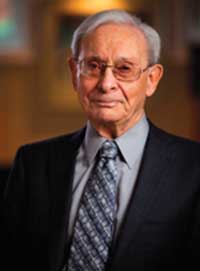 |
| Dr. Roger Wallis |
Distinguished Service Award
Roger Wallis was awarded the PDAC Distinguished Service Award. He received the award for his outstanding contribution and dedication to the PDAC over the past 47 years. He joined the association in 1967, and has been an active PDAC committee member since 1993. He has been a proponent of the PDAC taking a leadership role in becoming more proactive about industry issues, particularly around environmental and CSR issues.
Wallis has three passions: mining, mountaineering and badminton. He played a role in many large mining projects. For his Ph.D. thesis at the University of Birmingham (England), he mapped Greenland. While at Cambridge, he led tours to Spitz-
bergen in Norway. Wallis was part of 35 first ascents in the Rocky Mountains. He has won numerous local, provincial and national awards for badminton.
Spearheading PDAC’s CSR initiatives, he launched the e3 and e3_plus programs. One of reasons PDAC has been so successful is that it was able to transition from being reactive to proactive, turning its attention to areas such as CSR, aboriginals issues, international outreach, etc., Wallis explained. In accepting the award, Wallis shared that volunteers always get more out of volunteering than they put into it. “If you are like me, and you have benefited greatly from the mining business, maybe you should consider giving something back by volunteering,” Wallis said.
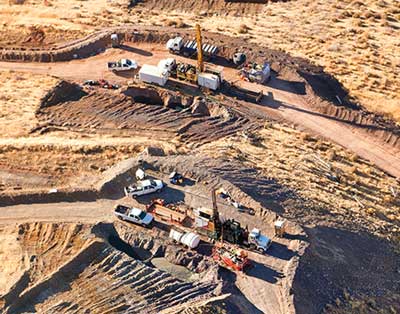 |
| Barrick Gold’s Goldrush deposit (above) was several years in the making. |
Thayer Lindsley Award
Barrick Gold’s Goldrush Discovery Team received the Thayer Lindsley Award for international mineral discoveries. The team discovered the 14.1-million-oz Goldrush deposit in Cortez District, Nevada, USA. The deposit, located in the eastern portion
of the Cortez mining district, 6 km southeast of Cortez Hills, potentially represents the largest Carlin-style discovery in Nevada since Cortez Hills more than 10 years ago. The Goldrush deposit has the third highest grade and is one of the few 10 million oz gold discoveries since 2001.
The 25-person Goldrush Discovery Team was led by Rob Krcmarov, senior vice president, global exploration; François Robert, vice president and chief geologist; Ed Cope, vice president, exploration North America; Kevin Creel, chief exploration geologist; Mark Bradley, district geologist; and Alejandro Ly, project geologist.
“The real enlightening moment was the hole we drilled 1.5 km south of Red Hill,” Creel said. “It was a drill hole that had a dual purpose; it was primarily a water well, but we were ex-tending it deeper to test the target horizon.” The chips from the hole revealed much more potential.
Describing the excitement around the discovery, Krcmarov said, as more and more work was performed, the euphoria began to build. “We couldn’t wait to see the next set of assays,” Krcmarov said.
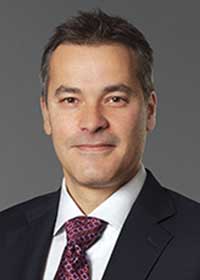 |
| Rob Krcmarov |
Carlin-style deposits are extremely hard to find. “Some of the biggest Carlin-type gold deposits that have been found in the last two decades have been concealed,” Krcmarov said. “They did not outcrop at the surface and they could not have been found by traditional prospecting methods—it’s a lot of detective work.”
The modern exploration strategy for Carlin-type deposits relies on a strong geologic foundation, where geologists look at the stratigraphic host rocks and describe them in painstaking detail, Creel explained.
Perseverance was the key for the Barrick exploration team in finding the Goldrush deposit. “This discovery was several decades in the making,” Krcmarov said. “People were able to use data from some of the other pits that had been mined, such as Horse Canyon, Pipeline, and subsequently Cortez Hills; they understood the controls; and they were able to apply it to the district in general.”
When Barrick made the announcement, they had defined a 3.5-million-oz gold resource. “We were able to double that to 7 million and then one year later doubled it again to 14 million oz,” Krcmarov said. The feasibility study will be completed in the first half of 2015.
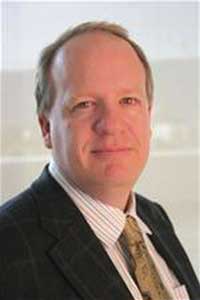 |
| Ross Mcelroy |
Bill Dennis Award
Ross McElroy, president and COO, Fission Uranium Corp., received the Bill Dennis Award for a Canadian mineral discovery or prospecting success. McElroy led Fission’s team of geologists in one of the most significant discoveries in the Athabasca Basin in recent years. The Patterson Lake South (PLS) property is a high-grade, shallow-depth uranium discovery located on the southwestern margin of the Athabasca Basin in northern Saskatchewan. (See Discoveries & Developments, p.36)
The Athabasca Basin is well known for high grade discoveries, such as Cigar Lake and McArthur River, but it has been 40 years since a discovery has been both high grade and shallow. “The significant discoveries were mostly on the east side of the Athabasca Basin,” McElroy said. “Everyone ignored the western side of the basin. Geologically, there is no reason the west side would be different than the east side. People just tend to look where the main activity takes place and historically that had been the east side.”
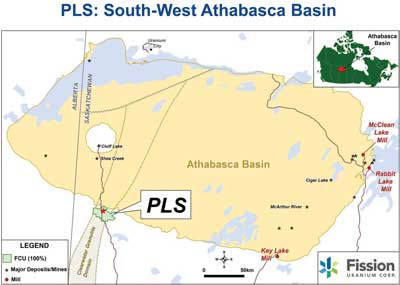 |
| Using an airborne radio-metric survey, Fission energy discovered Patterson Lake South (PLS). |
The PLS discovery was not McElroy’s first. Working as a geologist in the Athabasca Basin for more than 30 years, he has been instrumental in five of the last nine major discoveries, including McArthur River in 1988, the world’s largest uranium deposit.
The project has raised the company’s market cap from $40 million to $300 million at its peak. Under the leadership of McElroy, Fission’s uranium discovery has rejuvenated the entire exploration industry in the Athabasca Basin.
Environmental & Social Responsibility Award
Teck Resources received this year’s Environmental and Social Responsibility Award. The company was recognized for its outstanding accomplishments and commitment to sustainability, environmental and social initiatives. In 2011, Teck developed a comprehensive strategy, focusing on long- and short-term goals that will achieve the company’s vision for sustainability. The sustainability strategy supports six key areas that represent the biggest challenges and opportunities for the mining sector: community, people, water, biodiversity, energy and materials stewardship. Dedicated to building value through partnerships, Teck aims to address local and global sustainability issues.
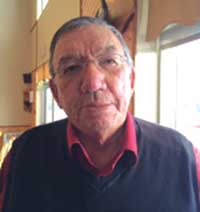 |
| Jim MacLeod |
Skookum Jim Award
Jim MacLeod won the Skookum Jim Award for Aboriginal achievement in the mineral industry. MacLeod received the award for his strong leadership on the environmental impact of the mining sector and his work advocating for more education and training programs for Aboriginal youth within the industry. He is a pioneer in mineral exploration and environmental impact and from the beginning recognized the link between mining and the environment, and the importance of managing the relationship. Founder of the Mistissini Geological Resources Centre, MacLeod has worked closely with Aboriginal communities as a consultant on projects and training in mining exploration. He also serves on the Board of Directors of Cree Mineral Exploration Board, and Canadian Aboriginal Minerals Association.









